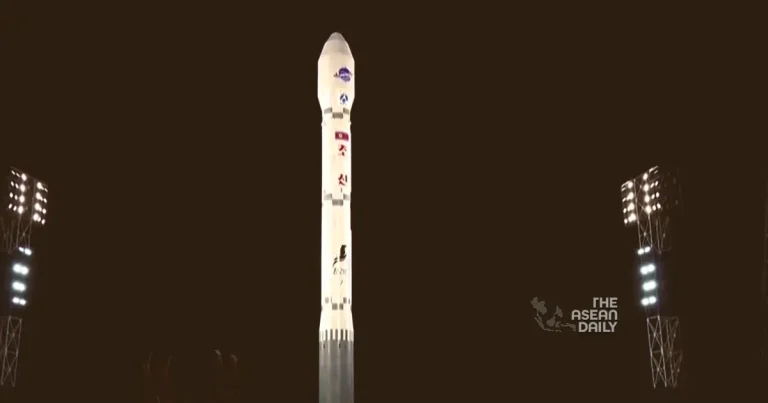28-5-2024 (SEOUL) North Korea’s latest attempt to launch a military reconnaissance satellite ended in a fiery explosion mere minutes after liftoff. However, despite the failure, analysts suggest the incident showcased the reclusive nation’s burgeoning advancements in its space program.
According to state media reports, the rocket, powered by a newly developed “liquid oxygen and petroleum engine,” encountered a critical malfunction during the first stage of its flight on Monday, ultimately plummeting into the Yellow Sea in a spectacular fireball. While the precise cause of the failure is still under investigation, initial assessments point to potential issues with the cutting-edge liquid-fuel rocket motor.
Significantly, the launch vehicle appears to be distinct from the Chollima-1 rocket used in North Korea’s successful satellite launch in November 2023, which relied on hypergolic fuels – substances that ignite upon contact and require meticulous handling. In contrast, the use of liquid oxygen and petroleum-based propellants could signal a strategic shift towards separating the nation’s civilian space program from its controversial ballistic missile development efforts, which are subject to stringent United Nations sanctions.
North Korea’s “Chollima-1″(千里馬-1) rocket, carrying its ”spy satellite”, exploded during launch. Video taken by NHK in Dandong, China’s border city to North Korea with 2M population. The rocket has supposedly liquid fuel. Full HD:https://t.co/xzTvbHW7w3 pic.twitter.com/DmzKcotPww
— CNSA Watcher (@CNSAWatcher) May 27, 2024
Analysts suggest that the technological leap may have been facilitated by assistance from Russia, which pledged last year to support North Korea’s satellite ambitions. Lee Choon-geun, an honorary research fellow at South Korea’s Science and Technology Policy Institute, noted the similarities between the propulsion system and those used in South Korean rockets initially developed through technical cooperation with Russia decades ago.
“Even if it failed, it is a huge leap,” Lee remarked, highlighting the challenges associated with handling liquid oxygen, which requires specialized storage and equipment at low temperatures. “Russia is the strongest country for liquid oxygen-kerosene fuel, and our Naro and Nuri rockets have adopted it through technical cooperation with Russia.”
South Korea released video footage that its military said shows the moment North Korea’s latest attempt at launching a new military reconnaissance satellite ended in failure https://t.co/Q207KJbKKR pic.twitter.com/zqDABL4A6P
— Reuters (@Reuters) May 28, 2024
While the motivations behind North Korea’s decision to switch engine types remain unclear, Lee posited that it could allow Pyongyang to separate its civilian space program from the ballistic missiles banned by the United Nations Security Council.
Reports from South Korea’s Yonhap news agency, citing an unnamed defense official, indicate that Russian experts have visited North Korea to aid in the satellite and space rocket program, although the extent of the assistance provided remains undisclosed by both Moscow and Pyongyang.
Shin Jong-woo, a senior researcher at the Korea Defence and Security Forum, suggested that if Russia did indeed contribute to the design of the new rocket or satellite, North Korea would likely require ongoing Russian support and components, deepening the cooperation between the two nations.
“North Koreans can re-launch soon if they obtain and analyze data correctly for that two-minute flight,” Shin remarked, pointing to the potential for a swift follow-up attempt.
Despite the failure, the launch has raised concerns among regional powers, with nuclear envoys from South Korea, the United States, and Japan strongly condemning the incident as a direct violation of United Nations Security Council resolutions prohibiting North Korea’s use of ballistic missile technology.




